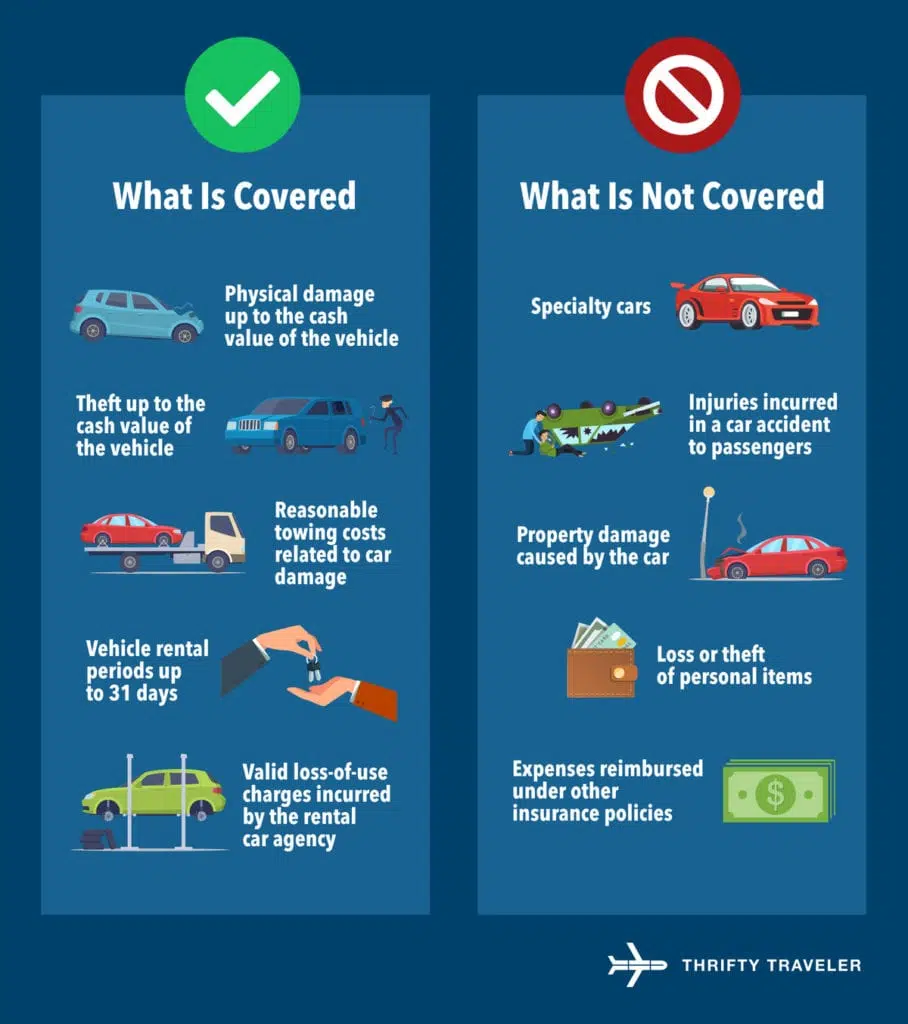For small business owners looking to add to their stash of Chase Ultimate Rewards points, there's perhaps no better option than Chase's *chase ink preferred*.
Beyond the ability to earn 90,000 Chase Ultimate Rewards points after spending only $8,000 in the first three months of account opening, the Ink Preferred offers a solid ongoing return on spending and strong travel benefits. Best of all, the card has a low annual fee of just $95 – making it worth a spot in your wallet for the long run.
Don't think you are eligible for a business credit card? You might be surprised at the answer. And if you are, Chase's top business credit card, the Ink Business Preferred, is one you should consider.
But remember: Credit cards are serious business. You should never apply for a credit card if you're already in debt, and never charge more to a credit card than you can afford to pay off immediately. That's especially true when looking at business credit cards, as the spending required to earn a big bonus is often much higher than what you will find on the consumer card side of things.
Read on for a full breakdown of the Chase Ink Business Preferred credit card.
Learn more about the *chase ink preferred*
Who Can Apply for Business Credit Cards?
Before we get into the nitty-gritty of what makes the Ink Preferred a great business card for small business owners looking to earn valuable travel points, it's important to set a foundation for who is actually eligible to open business cards.
To open a business credit card, you don’t need a full-time business with employees or six-figure revenues.
While that situation would obviously qualify you to open a business credit card, you can also get approved for a small-business credit card like the Ink Preferred with a part-time side hustle, a freelance job, a gig economy job, or even by selling goods on online marketplaces like Etsy, Facebook Marketplace, Craigslist and more. In fact, many Americans have what the banks would consider a small business and don't even realize it.
Do you have any income from freelance work, or plans to start freelance work? You have a business. Have you ever sold an item on eBay, Facebook Marketplace, Etsy, or other platforms, or have plans to do so in the future? You have a business.
At the end of the day, if you are selling any goods or services, or contracting with a company to do so in an attempt to make a profit, you have a small business and thus are typically eligible to apply for a small business credit card. That makes it possible for just about anybody to apply for a business credit card.
Just keep in mind: You should never lie or attempt to mislead a bank when applying for a business credit card. It's important to have a legitimate business, even if that business is a small one.
Read more: You Might Be Eligible for Business Credit Cards & Not Know It
Chase Ink Business Preferred Card Benefits
Welcome Offer Bonus
Last year, Chase slashed the spending requirement on the Ink Preferred, and now, the bonus is bigger than ever before: bonus_miles_full
These 90,000 points can be redeemed for a minimum value of $1,125 towards travel through Chase Travel℠, and potentially much more by using Chase's stable of airline and hotel transfer partners.
Don't want to use them for travel? You can redeem them at a rate of one cent each for cash back. That means the 90,000 points would be worth $900.
These points don't expire as long as you keep your account open.
Earn 3x Points
This is a big one, and a reason to hold the card for the long-term.
Chase Ink Business Preferred cardholders will earn 3x Ultimate Rewards points per dollar spent on your first $150,000 spent each year in combined purchases for travel, shipping purchases, internet, cable, and phone service, and on advertising purchases made with social media sites and search engines.
If your business spends a lot on online advertising, you won't find a better return on a card with a lower annual fee.
You'll earn 1x point per dollar spent on all other purchases you make with your card.
$600 of Cell Phone Insurance Protection
When you use your Ink Business Preferred Card to pay your cell phone bill, it will be covered for up to $600 for repairs or replacement after paying a $100 deductible. If your phone is damaged or subject to theft, the insurance coverage will kick in. However, this insurance policy does not include coverage for lost phones.
Combine this coverage with the ability to earn 3x points per dollar spent on your phone payment and it makes the Ink Preferred a great option for spending in this category.
Free Additional Employee Cards
While some credit cards will charge you a fee for adding authorized users, that's not the case with the Ink Preferred Card.
You can add up to 99 additional employee cards at no extra cost.
Trip Cancellation/Delay Insurance
If you need to cancel or end a trip early because of a covered reason like illness or severe weather, Ink Preferred cardholders will be eligible for up to $5,000 of coverage per person for prepaid, nonrefundable travel expenses so long as you booked your trip with your card. It's similar to the coverage offered by Chase's Sapphire cards.
Coverage is limited to $10,000 per trip.
Read next: Our Experience Using Chase's Trip Delay Insurance
Trip Delay Reimbursement
Did you book a trip that was delayed by more than 12 hours for inclement weather or other situations where the airline won't provide compensation? Or did the delay cause you to have an overnight stay away from your home?
As long as you booked the trip with your Ink Preferred or Ultimate Rewards points that the card earns, Chase will reimburse you, your spouse, and any dependent children under the age of 20 up to $500 per ticket for “reasonable” expenses for things like lodging, food, and toiletries.
Ink Preferred Primary Car Rental Coverage
It might get buried underneath the allure of the big 90,000-point bonus and the Ink Preferred's other perks, but the rental car insurance you get is one of the best benefits of all.
In fact, it's the best rental car insurance you can get from a credit card. It covers any damage to your rental and provides cardholders with primary auto rental insurance. And that generally means you can skip additional policies from your rental car company – and even from using your own policy to file a claim if the worst happens.
It's the same coverage you'll get from the *csp* – and that's a good thing.
Read More: All About the Chase Sapphire Rental Car Insurance Benefit
Purchase Protection
Ink Preferred cardholders also get purchase protection for items that are damaged or stolen within the first 120 after making a purchase. You'll get up to $10,000 per claim, and up to $50,000 per card account per calendar year.
Items from laptops to office supplies and everything in between are protected with this benefit.
Extended Warranty Protection
Chase provides Ink Preferred cardholders with a complimentary extended warranty on all purchases they make with the card and adds one year of coverage to items that have a manufacturer's warranty of three years or less, free of charge.
You'll be covered for up to $10,000 per warranty claim and up to $50,000 in claims per account per calendar year.
$95 Annual Fee
The Ink Preferred card charges a $95 annual fee which isn't waived in the first year. The card also waives foreign transaction fees – making it a good option if your business spends money abroad.
When you look at everything the card offers, and the ability to earn a substantial amount of points on key business category spending, we feel the annual fee is more than fair.
Read More: Do the Math, Don't Rule Out Travel Credit Cards with Annual Fees
Who is the Ink Business Preferred Credit Card Best For?
If you're a small business owner or have a side hustle and want to earn points that can be used for travel, in addition to cash back, the Ink Preferred is easily worth a look.
You'll earn 3x points per dollar spent on travel and online advertising (and a few other categories we will outline later) on your first $150,000 spent each calendar year. With the exception of the *amex biz gold* which earns 4x points per dollar spent on two selected business categories each month (including online advertising) on up to $150,000 spent each year, it's the best return you'll find.
But the Amex Business Gold card also charges an annual fee of $375 (see rates and fees). While that fee can certainly be worth it if you are spending enough on the card, it makes the $95 annual fee on the Chase Ink Preferred look pretty appealing.
At the end of the day, if your business spends a lot on travel, shipping purchases, internet, cable and phone service, or online advertising purchases, the Chase Ink Business Preferred Credit Card should be at the top of your list.
Related reading: Amex Business Gold vs. Chase Ink Preferred: Which is Best?
Are You Eligible to Open the Chase Ink Business Preferred Card?
Applying for credit cards to travel more comes with all kinds of considerations, from protecting your credit score to navigating different banks and mastering all the different points and miles out there. Chase is one of the titans of the world of points and miles, and it has one of the most important restrictions to keep in mind: the Chase 5/24 Rule.
It’s a hard-and-fast restriction rolled out years ago in order to limit card applicants from opening credit cards for the sole purpose of earning bonus rewards. If you’ve heard of the phrase “churning,” that’s exactly what this rule is designed to crack down on.
Here’s what it boils down to:
- If you have opened five or more credit cards in the past 24 months from any bank credit card issuers (not just Chase cards), you will not be approved for Chase credit cards, regardless of your credit score or history with Chase Bank.
- The rule does not count credit inquiries but rather new cards you have applied for and been approved.
But business credit cards work a bit differently with the Chase 5/24 rule.
When it comes to Chase business credit cards like the Ink Preferred, specifically, you’ll need to be underneath the 5/24 rule to get approved … but that approval will not add to your 5/24 count. That means if you are at 4/24 and apply for the Ink Preferred and get approved, you would still be at 4/24.
In general, most business card approvals do not count toward your 5/24 total. That includes business cards from American Express, Chase, Citi, Bank of America, and more.
The reason? Business credit card accounts typically don't show on your personal credit report.
Read more: Master Guide to Credit Card Applications: All the Rules You Need to Know, Bank by Bank
Pair it With Another Ink or Sapphire Card
One amazing thing about Chase's ecosystem of travel credit cards is that they work very well together. So if you already have a personal card like the *csp* or *csr*, you can combine the points earned from the Ink Preferred into one account, making them easier to redeem.
Previously, this required making a phone call to Chase. However, the bank recently added the ability to combine points from Chase personal and business accounts online.
Not to mention, Chase also has two fantastic no-annual-fee cashback business cards: The *chase ink unlimited* and the *chase ink cash*. While these cards technically earn cash back, that cash back can be turned into Chase Ultimate Rewards points to redeem towards travel making them worth more as long as you hold an Ink Preferred or one of the Sapphire cards.
There are no restrictions from holding more than one Ink card. So as long as you are under the 5/24 rule, you could technically open and hold all three cards and accelerate your points earning for your business.
Read next: Ink Business Cash vs Unlimited: Which is Best for Your Business?
How to Redeem 90K Chase Ultimate Rewards Points
The beauty of Chase points is just how valuable – and flexible – they are. So, what can 90,000 points get you? In two words: A lot.
Those reward points are worth a minimum of $1,125 toward flights, hotels, and other travel expenses booked through Chase travel. However, by leveraging Chase transfer partners and sending these points to airlines like Air Canada Aeroplan, United, Iberia, British Airways, or even hotel chains like Hyatt, you can get much, much more value from this 90,000-point bonus.
Here's a quick list of some of the best ways you could redeem this big 90,000-point bonus.
This list is just the start! Read our full guide on the best ways to redeem Chase points!
Take a Flight Deal & Make it Free
One of our favorite uses of any credit card points is booking the cheap domestic or international flight deals you find via Google Flights or with a Thrifty Traveler Premium subscription. And the absolute best way to book them is with Chase Ultimate Rewards points.
Chase points have a bonus when you've got the Chase Ink Preferred. Every point you've got from an Ink Preferred Card is worth 1.25 cents toward travel when you use them in the Chase Travel, the same as you get with the Chase Sapphire Preferred card. That's why we say this 90,000-point bonus is worth at least $1,125 toward flights, hotels, or other travel.
Take this recent deal on flights to Peru, for example. You could book a $352 flight from Austin (AUS) to Lima (LIM) using less than 29,000 Chase Ultimate Rewards points roundtrip! With the current bonus, you'd have enough points to book flights for three people at these rates.
Booking flights directly through Chase Trave is generally simple and straightforward – it's one of the easiest ways to redeem points for travel, period. You'll even earn miles when you take your free flight. Better yet, you can book flights on almost any airline using this method.
4 (or More!) Roundtrip Tickets to Hawaii
You can book two, four, or more round-trip tickets to Hawaii with a big Chase points bonus. So much for Hawaii being an expensive place to get to, right?
This is where turning to Chase transfer partners really shines, as you have several options to book round-trip flights to the Hawaiian islands for about 25,000 points each – or much less.
If you time it right, you can even get to Hawaii for under 12,000 Southwest Rapid Rewards points, as with this round-trip flight from Oakland (OAK) to Maui (OGG). And because Chase points transfer to Southwest on a 1:1 basis, 12,000 Chase points is all you need.
Another option is transferring your points to Air Canada Aeroplan, which you can use to book flights to Hawaii on United Airlines. Here's why: Flying from the West Coast, you can book roundtrip flights to Hawaii for just 25,000 Aeroplan points … even when United is charging 45,000 miles or more for the exact same flights.
Chase points also transfer to Air Canada on a 1:1 basis, so just 26,000 Chase points is all you need per ticket.
Read more on our favorite ways to get to Hawaii using points!
A Trip for 3 to Europe – Or 1 in Business Class
This 90,000-point bonus is more than enough to get two people to Europe and back … or fly solo in style.
The trick is turning to Iberia, a Spanish airline and yet another Chase transfer partner. Using Iberia, you can fly from Boston (BOS), New York City-JFK (JFK), or Chicago-O'Hare to Madrid (Madrid) in economy for as low as 34,000 miles roundtrip.
Since Chase points transfer to Iberia on a 1:1 basis, a stash of 90,000 points can almost cover three roundtrip flights to Europe!
Or you could splurge for this:
Read our step-by-step guide on how to book Iberia business class!
That's right: 90,000 Chase points is more than enough for three one-way flights (or nearly two roundtrip) to Europe in Iberia business class. You can do it for just 34,000 miles each way or 68,000 miles roundtrip! That's a fraction of what most other airlines charge to fly business class to Europe.
Considering these business class tickets cost $4,000 or more a ticket when paying cash, it's a phenomenal way to use those Chase points. And with a Thrifty Traveler Premium alert like this one, it's fairly easy to book.
Book Free Hotel Nights with Hyatt
It's not just flights: You can book hotels using this 90,000-point bonus, too. And with Chase points, you've got an ace in the hole with Hyatt.
With free nights starting as low as just 3,500 points per night, World of Hyatt is easily the most valuable hotel loyalty program … and it's not even close. Chase points also transfer to Hyatt 1:1
With 90,000 points in hand, you could:
- Cover 34 nights at the cheapest Hyatt properties!
- Book several nights at one of the 100-plus excellent all-inclusive resorts like the Hyatt Ziva Puerto Vallarta or the Hyatt Ziva Riviera Cancún
- Book a few nights at a posh Park Hyatt property close to home or abroad – some like the Park Hyatt Siem Reap in Cambodia are bookable for just 15,000 points per night!
- Get up to three nights with your own villa in Bali (complete with a private pool!) at the Alila Villas Uluwatu
Score a Business Class Suite to Tokyo
This isn't just business class. It's ANA's The Room business class … and you can book a trip to Japan flying in this seat with your Chase Ink Preferred bonus.
Thanks to a strong U.S. dollar, there's never been a better time to visit Japan – and this is one of the best ways to get there.
All Nippon Airways (ANA) might not be a Chase transfer partner, but Virgin Atlantic is. And Virgin Atlantic prices these flights more like an economy seat: You can fly from the western U.S. to Tokyo and back for just 105,000 Virgin Atlantic points, or 120,000 points from Chicago-O’Hare (ORD) or East Coast cities. One-ways are half the price.
Read more: How to Book ANA flights with Virgin Atlantic Flying Club points
Chase Ultimate Rewards Transfer Partners
There are a lot of great ways to use Chase's transfer partners. Here's the full list of available options for sending points to airline or hotel programs.
| Program | Type | Transfer Ratio | Transfer Time |
|---|---|---|---|
| Aer Lingus | Airline | 1:1 | Instant |
| Air Canada Aeroplan | Airline | 1:1 | Instant |
| Air France/KLM | Airline | 1:1 | Instant |
| British Airways | Airline | 1:1 | Instant |
| Emirates | Airline | 1:1 | Instant |
| Iberia Plus | Airline | 1:1 | Instant |
| JetBlue | Airline | 1:1 | Instant |
| Singapore Air | Airline | 1:1 | 12-24 hours |
| Southwest Airlines | Airline | 1:1 | Instant |
| United Airlines | Airline | 1:1 | Instant |
| Virgin Atlantic | Airline | 1:1 | Instant |
| World of Hyatt | Hotel | 1:1 | Instant |
| IHG | Hotel | 1:1 | 1 day |
| Marriott Rewards | Hotel | 1:1 | 2 days |
Read more: The Master List of Credit Card Transfer Partners
Bottom Line
The Chase Ink Preferred Business Card is an extremely well-rounded business credit card with a very reasonable $95 annual fee. Plus, with Chase recently upping the sign-up bonus to 90,000 points after spending $8,000 in the first three months, there's never been a better time to apply.
If your business can responsibly spend enough to earn the big 90,000-point bonus, this is simply one of the best cards out there for small business owners looking to earn travel rewards.
Learn more about the *chase ink preferred*













Today I was shocked to see I have lost the ability to combine points on my Ink Business Preferred cards. Doing a quick check, I was, however, able to move points from my old Business Ink Plus card to one of the Ink Business Preferred cards, just not the other way around! I hope this is only a technical glitch. I haven’t seen anyone other than “Monkey Miles” even mentioning this issue online.